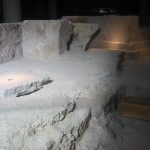Llíria has participated in a forum together with Las Palmas and Manises, candidates to become part of the UNESCO Creative Cities Network. The municipality of Edeta, as Creative City of Music since 2019, wished to be present on this day, where a representation of the City Council, consisting of the councillors Fina Torrijo and Paco García, gave support to the candidacies of both municipalities.
In this event, held at the ‘Espacio Miller’ in Las Palmas de Gran Canaria, Llíria showed the main benefits and the good practices of the UNESCO Creative Cities Network, which allows to develop a thread between municipalities from different parts of both national and international context, with the aim of building cultural and innovative synergies.
The councillor for Tourism, Paco García, pointed out that “the difference between being City of Music and what we had before is, above all, qualitative: we continue developing several initiatives, but we also face other projects that, without having the support of the UNESCO Network, would be more complicated to promote.”

Likewise, García also wanted to hope that both Manises and Las Palmas “could see their wishes fulfilled and become Creative Cities.” “Adding in municipalities with their creative characteristics would mean an increase in the potential of the Network to build future projects. In fact, this contact has allowed us to start a relationship to tackle joint cultural initiatives that can be very interesting,” explained García.
The candidacy of Las Palmas de Gran Canaria for Creative City of Music was presented by the mayor of the municipality, Augusto Hidalgo, and the councillor for Culture, Encarna Galván, who highlighted their capacity for musical creation and social integration, in addition to highlighting their cultural and musical connection with Africa.
Manises, as a candidate for the Creative City of Crafts and Folk Art, was represented by the councillor for the Promotion of Ceramics, Xavier Morant, and the councillor for Tourism, Ángel Mora, who took the opportunity to promote the internationalization of their ceramics, linked to their long tradition and with the work of regulated training that they have been developing for a century.








